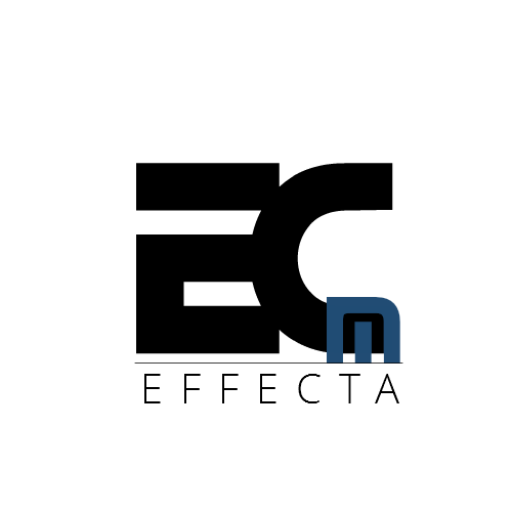Old Tools, Old Results: Future Relevance Demands Future-Ready Solutions
Change is constant, progress is not. In a world where the allure of shiny new apps and the latest platform is strong, it’s vital to remember that the tools themselves aren’t the key to success. Capability seldom wins the game. What truly matters is the strategic thinking that underpins your selection and implementation of those tools.
I know. Revolutionary. It sounds like it.
What truly matters is the strategic thinking that drives your selection and implementation of those tools. Because here’s the uncomfortable truth: You can buy every cutting-edge business solution on the market and still produce embarrassingly outdated results.
Why? Because most businesses apply tomorrow’s tools to yesterday’s thinking.
The Preeminence Paradox
The marketplace doesn’t reward you for being slightly better than your competition. It rewards you for being fundamentally different. Yet, most businesses are stuck in the comparative advantage model, where they strive to be ‘just like our competitors, except 10% faster/cheaper/friendlier‘. This approach only positions you as a commodity with a slightly different price tag.
Congratulations. You’ve just positioned yourself as a commodity with a slightly different price tag.
The principle of Preeminence demands that you position yourself as the only logical choice in your market. This doesn’t mean outmuscling the competition on some arbitrary metric. It means redefining the game itself and creating what I call a ‘Category of One’.
Consider Peloton. They didn’t enter the crowded exercise equipment market, saying, “Our stationary bike is 15% more durable than Competitor X.” They created an entirely new category: the connected fitness experience that transforms your home into a premium, on-demand fitness studio. They didn’t compete within the existing framework; they created their own playing field where the old rules didn’t apply.
Why Your “Advanced” Tools Still Produce Mediocre Results
Here’s a painful reality check: Most businesses invest in cutting-edge tools while maintaining obsolete strategic frameworks. It’s like putting a Ferrari engine in a horse-drawn carriage and wondering why you’re not winning Formula 1 races.
The problem isn’t the Ferrari engine. The problem is everything else about your vehicle.
Let me break down the most common mistakes:
- You’re optimising the wrong metrics. Your sophisticated analytics are tracking meaningless vanity metrics while ignoring the true drivers of lifetime customer value.
- You’re applying new tools to old processes. Your state-of-the-art CRM is being used to manage the same tired sales funnel that hasn’t evolved since 1995.
- You’re chasing efficiency instead of effectiveness. You’re getting really good at doing things that don’t actually matter to your market.
- You’ve confused tools with strategy. You think having the tool is the same as having a strategic approach to using it. (Spoiler alert: it’s not.)
Let me put this in terms even your board members might understand: Your tools are not your competitive advantage. Your strategic implementation of those tools is.
Creating Your Category of One: The Ultimate Future-Ready Solution
The path to Preeminence begins with a fundamental shift in business and strategic perspective. Instead of asking, “How can we be better than our competitors?” ask,
“How can we make our competitors irrelevant?”
This isn’t just semantic wordplay – it’s a complete restructuring of your strategic approach. It’s a powerful shift that puts you in control of your market destiny.
1. Redefine Your Role in Your Clients’ Lives
The “Possitioning Race” starts with the know how and expertise. It builds on good intentions and mutual respect. However, the most powerful position in any market is that of the trusted advisor. Trust moves the needle. You will go nowhere without it. Your strategic choices command that you become meanigful specific to your tribe rather that just a vendor of products or services. You need to position as the definitive authority your clients turn to for guidance.
This requires you to:
- Understand your client’s problems better than they do themselves
- Have more expertise in solving those problems than anyone else
- Genuinely care more about their outcomes than your competition does
When you commit to these principles, price sensitivity mysteriously evaporates.
You may ask Why? Because you’re no longer competing against other options – you’ve become the only logical choice.
2. Break the Trade-Off Paradigm
Most industries operate on the assumption that certain trade-offs are inevitable: quality versus price, speed versus attention to detail, personalisation versus scalability.
The businesses that create Categories of One refuse to accept these supposed trade-offs. They innovate specifically to deliver what the market has been conditioned to believe is impossible.
Southwest Airlines and Wizz Air didn’t just compete on price; they created an entirely new model that delivered both lower prices AND a distinctive customer experience. They didn’t outcompete existing airlines – they created a new category that played by different rules.
3. Reverse-Engineer Ideal Client Experiences
Most businesses design their operations around their own internal capabilities and constraints. Future-ready organisations do the opposite: they design perfect client experiences first, then build the operational infrastructure to deliver them.
This isn’t just about being “customer-centric” in the shallow way most companies claim to be. It’s about obsessively engineering every touchpoint to create maximum value, solve unstated problems, and deliver unexpected benefits.
4. Master the Art of Strategic Subtraction
Simplicity is business is the ultimate virtue. The most sophisticated strategies often involve removing elements rather than adding them. PayPal didn’t add more features to traditional banking; they removed the friction and complexity that made traditional banking frustrating.
Ask yourself: What industry assumptions could you eliminate? What steps in your process add no value for the client? What “standard practice” in your industry actually diminishes the client experience?
The gaps you create through strategic subtraction often become your most distinctive competitive advantage.
The Three Multiplicative Leverage Points
Creating a Category of One isn’t about making incremental improvements. It’s about finding disproportionate leverage points in your business model. Here are the three most powerful:
1. Asymmetric Value Creation
The most valuable businesses create disproportionate value compared to the resources they consume. They find ways to deliver $100 of perceived value while consuming only $10 of resources.
This isn’t about charging less – it’s about creating so much value that your price becomes a secondary consideration. When you deliver 10x the value of alternatives, you can command premium pricing while still being the obvious choice.
2. Zero-Competition Positioning
Most SMEs position themselves within existing competitive frameworks. Category of One businesses position themselves where direct comparisons become impossible.
They accomplish this by:
- Combining previously separate value propositions
- Solving adjacent problems no one else addresses
- Creating proprietary methodologies that produce superior results
When you can honestly say, “There’s literally no one else who does exactly what we do,” you’ve achieved zero-competition positioning.
3. Geometric Growth Mechanics
When you can honestly say, “There’s literally no one else who does exactly what we do, “you’ve achieved zero-competition positioning. This is the path to geometric growth mechanics, where your success accelerates automatically.
The most potent geometric mechanics include:
- Network effects (each new user makes the service more valuable)
- Data advantages (each client interaction improves your solution)
- Community dynamics (users create value for other users)
Building these dynamics into your business model creates an accelerating advantage that competitors can’t easily replicate.
The Uncomfortable Truth
Here’s the reality most business leaders refuse to face: being marginally better isn’t enough anymore. The market no longer rewards 10% improvements.
The future belongs to businesses that:
- Create entirely new categories rather than competing in existing ones
- Solve problems clients don’t yet recognise they have
- Deliver combinations of value that weren’t previously possible
Your future relevance depends not on adopting new tools but fundamentally on new strategic thinking that makes you the only logical choice in your market.
The Preeminence Imperative
The businesses that achieve true Preeminence share one distinctive common trait: they are pathologically client-focused. Not in the superficial “customer-first” or “always right” way that decorates corporate mission statements but in a deep, almost obsessive commitment to client success.
They live by these principles:
- They refuse to let clients make decisions that aren’t in their best interest
- They educate rather than manipulate
- They give away their best thinking rather than hoarding it
- They tell the truth even when it costs them short-term revenue
This level of client commitment isn’t just ethical – it’s strategically superior. It creates a level of trust and advocacy that no marketing budget can buy.
Your Future-Ready Challenge Needs A Resolution
If you had some sleepless nights thinking about your future, and if you’re serious and more than anythng committed to your future relevance, here’s your challenge:
- Identify the three biggest problems your ideal clients face that nobody in your industry is effectively solving.
- Develop a proprietary approach to solving these problems that delivers 10x the value of existing alternatives.
- Structure your entire business around delivering this solution in a way that creates a Category of One.
This isn’t easy. It requires intellectual honesty, strategic courage, and a willingness to abandon successful but outdated business models before they begin to decline.
But the alternative is slow, inevitable commoditisation – the strategic equivalent of watching your relevance fade away one quarterly report at a time.
The tools of the future are less necessary than the thinking of the future. Master that thinking, and you won’t just remain relevant – you’ll become the standard by which relevance itself is measured.

